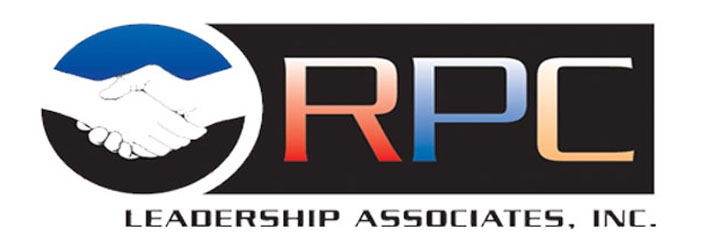…At The Outer Edge of Your Comfort Zone.
As we wind down 2010, many of us are reflecting on what we accomplished in 2010 and what changes we will make to continue our successes into 2011. In my own work with small and medium businesses as well as non-profit organizations, managing change is the most common topic of conversation; and why not? The uncertainty that remains in the economic and political environments have leaders in the unenviable position of making the next right strategic decision in the face of all this uncertainty.
How do leaders mitigate this uncertainty enough to make the crucial decisions before them? While there are many moving parts to a successful business strategy, two elements of leading any organization is understanding the general environment you are competing in as well as knowing how your current capabilities match up to that environment. Key to a leader’s strategic thinking process includes a recurring assessment of their general environment against six different factors: Demographic/Psychographic, Economic, Political/Legal, Socio-Cultural, Technical and Global. Regardless of whether you lead a global organization or do business directly with the government, all six factors will influence your ability to adapt and evolve your business. As I briefly outline each factor below, ask yourself how they impact your business, non-profit or corporation.
• Demographic/Psychographic – we are already seeing debates around the impact of the new census results and the changing demographics of the US population. Psychographics reflect the personalities, values, attitudes and lifestyles of the population.
• Economic – while the recession may be over, businesses generally are still taking a cautious road ahead having a direct impact on the economic recovery. As you assess your own organization’s economic health, how did your supply chain and value chain fare as well?
• Political/Legal – all eyes are on Washington DC these days to gauge the impact of Congress’ decisions and how they influence the current level of cautiousness across the business landscape. How are current federal, state and local budget gaps impacting your organization?
• Socio-Cultural –We see more and more organizations hiring temporary workers, even in management and other predominantly white-collar positions. How “Green” is your organization?
• Technical – an article in the 12/20/10 Wall Street Journal opines how Dr. Seuss would love the e-Readers because they enable children to read more effectively. While technology is changing at a rapid pace, is it effectively advancing the way you conduct your business?
• Global – you may not be a global business, but events around the globe impact your business instantaneously. Have you figured out how and why?
While understanding the general landscape provides today’s leaders with a current view of their external environment, it is only useful if put in the context of their business. The tool most often used for this aspect of the strategic thinking process is the SWOT (Strengths, Weaknesses, Opportunities and Threats) Process. This assessment of the internal environment captures the current capabilities (strengths and weaknesses) and puts them in the context of the external environment (opportunities and threats). While the SWOT is a very versatile tool used to help leaders proactively deal with changes in their business, they must keep in mind it only provides a one-shot view of a moving target and must be used routinely to be effective. Additionally, because we identify an organizational strength through the SWOT process does not mean the strength represents a competitive advantage.
We know change is inevitable, but growth in our business because of the change is not. Leaders must constantly assess which way the winds of change are blowing and adjust their strategy accordingly. I am reminded of the closing scene in The Truman Show when Jim Carrey’s Truman finally makes it to the outer edge of his known world. After a brief dialog, Truman opens the door, literally and figuratively, to a whole new world of possibilities. When you get to the outer edge of your comfort zone, are you prepared to open the door to your new possibilities?
Lead Well!
Thursday, January 6, 2011
Your Mission...
…Should You Choose To Accept It
Many of you recognize this line from the Television series or movie (or both depending on your generation) called Mission: Impossible. I recently had the privilege of delivering the Keynote Address to a group of military veterans at a career transition event the day after Veterans Day. The theme of mission is one our military veterans clearly understand so I and the other speakers leveraged the same theme throughout the event. It also provides the theme for this issue as we head into the holiday season.
Last month, we talked about information overload and its impact on a leader’s ability to make knowledgeable decisions. I would submit having a clear sense of mission is just as important to making meaningful decisions as it creates the tangible importance of making the decision to begin with. When a leader loses the understanding of importance, the overall mission begins to falter. We see organizations in many corners of our environment that have lost their sense of mission. In recent years we have seen examples of government, financial, religious and educational institutions with documented lapses in their sense of mission.
So how do leaders renew their sense of mission? They must first ask themselves why do they exist. Corporations, Entrepreneurial ventures and Not-For-Profits all exist for a defined purpose. The second question every organization must ask is, “Whom do they serve?” We use the word “serve” specifically because it creates the mindset of service as opposed to asking, “Who do we sell to?” or “Who is in our market?” Whenever I work with clients whose business has leveled off or hit a plateau, I always start with some variation of that same question. In answering the question of whom they serve, they renew the line of thought creating the guidelines for their organization or business.
The sense of mission also implies the entire organization is engaged to effectively complete the mission. Leaders must be able to effectively communicate the mission to their teams and herein lies part of the challenge – they may not know how or they overestimate their ability to do so. A recent survey by Developmental Dimensions International and published in the Wall Street Journal suggests managers struggle with the necessary skills necessary to execute a sense of organizational mission. Of the 1,100 respondents, only 36% felt they were strong in coaching their teams while only 34% felt they were strong in gaining commitment from their teams. Lastly only 32% mentioned delegating as their strength. These types of blind spots can cause an organization’s leaders to lose their way. Leaders cannot accomplish the mission alone and thus must be able to not only communicate the goals of the team but also the purpose as well. The goals address what needs to be done, the purpose addresses why the goal is important to the organization.
What separates the great leaders from everyone else is their sense of mission and the personal accountability they have to the mission and those they serve. As we head into the holidays and time for reflection, what mission will you choose to accept?
Lead Well!
Many of you recognize this line from the Television series or movie (or both depending on your generation) called Mission: Impossible. I recently had the privilege of delivering the Keynote Address to a group of military veterans at a career transition event the day after Veterans Day. The theme of mission is one our military veterans clearly understand so I and the other speakers leveraged the same theme throughout the event. It also provides the theme for this issue as we head into the holiday season.
Last month, we talked about information overload and its impact on a leader’s ability to make knowledgeable decisions. I would submit having a clear sense of mission is just as important to making meaningful decisions as it creates the tangible importance of making the decision to begin with. When a leader loses the understanding of importance, the overall mission begins to falter. We see organizations in many corners of our environment that have lost their sense of mission. In recent years we have seen examples of government, financial, religious and educational institutions with documented lapses in their sense of mission.
So how do leaders renew their sense of mission? They must first ask themselves why do they exist. Corporations, Entrepreneurial ventures and Not-For-Profits all exist for a defined purpose. The second question every organization must ask is, “Whom do they serve?” We use the word “serve” specifically because it creates the mindset of service as opposed to asking, “Who do we sell to?” or “Who is in our market?” Whenever I work with clients whose business has leveled off or hit a plateau, I always start with some variation of that same question. In answering the question of whom they serve, they renew the line of thought creating the guidelines for their organization or business.
The sense of mission also implies the entire organization is engaged to effectively complete the mission. Leaders must be able to effectively communicate the mission to their teams and herein lies part of the challenge – they may not know how or they overestimate their ability to do so. A recent survey by Developmental Dimensions International and published in the Wall Street Journal suggests managers struggle with the necessary skills necessary to execute a sense of organizational mission. Of the 1,100 respondents, only 36% felt they were strong in coaching their teams while only 34% felt they were strong in gaining commitment from their teams. Lastly only 32% mentioned delegating as their strength. These types of blind spots can cause an organization’s leaders to lose their way. Leaders cannot accomplish the mission alone and thus must be able to not only communicate the goals of the team but also the purpose as well. The goals address what needs to be done, the purpose addresses why the goal is important to the organization.
What separates the great leaders from everyone else is their sense of mission and the personal accountability they have to the mission and those they serve. As we head into the holidays and time for reflection, what mission will you choose to accept?
Lead Well!
Labels:
Accountability,
Customer Loyalty,
Mission,
Purpose,
Vision
Subscribe to:
Posts (Atom)

